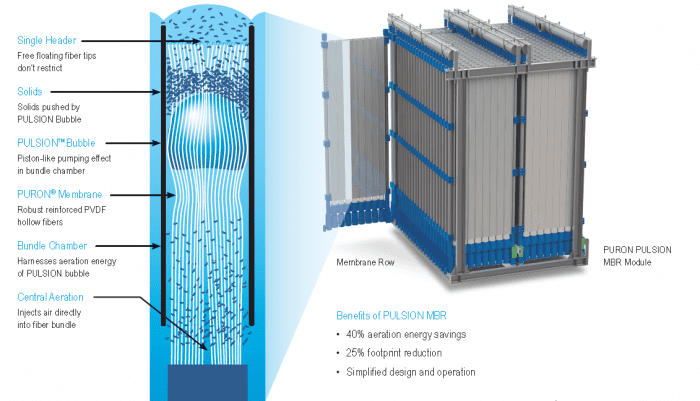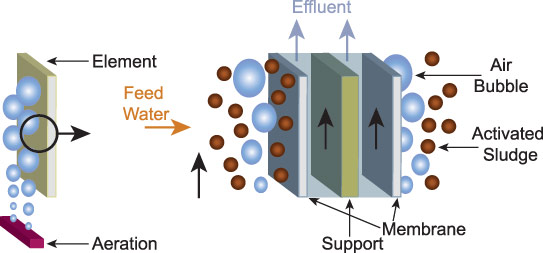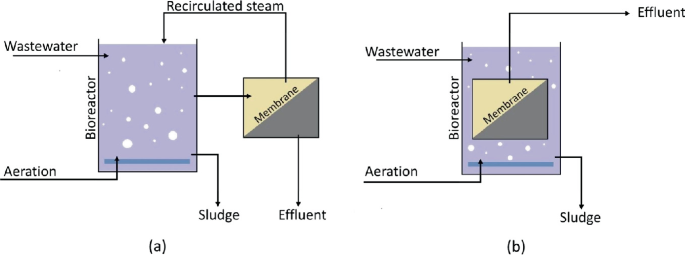Membrane Bioreactors Discussed: Reliable Solutions for Tidy Water
Membrane layer bioreactors (MBRs) have actually arised as an advanced option for attending to the pushing obstacles of wastewater treatment - Membrane Bioreactor. By incorporating organic processes with advanced membrane layer filtration, MBRs not just improve the high quality of treated water yet additionally decrease the spatial requirements of therapy centers.

What Are Membrane Layer Bioreactors?
Membrane bioreactors (MBRs) are advanced wastewater treatment systems that incorporate organic deterioration procedures with membrane layer filtering technology. This assimilation permits the efficient removal of impurities from water, making MBRs a preferred option in different applications, including metropolitan wastewater treatment and commercial effluent administration.

Among the crucial benefits of MBRs is their ability to generate top notch effluent, typically ideal for reuse in irrigation or industrial processes. In addition, MBRs need a smaller sized footprint contrasted to conventional therapy systems, making them ideal for city setups where area might be restricted.
Furthermore, MBRs can properly deal with varying influent lots and are less prone to the effects of harmful shocks. These features contribute to their expanding appeal as a sustainable solution for attending to the raising demand for tidy water while lessening environmental impacts.
Exactly How Membrane Bioreactors Job
While the operation of membrane bioreactors (MBRs) may seem facility, it fundamentally revolves around the synergy between organic procedures and membrane filtration. MBRs integrate a biological treatment procedure, commonly activated sludge, with a membrane separation system to deal with wastewater successfully.
In an MBR system, wastewater is first presented into a bioreactor where microorganisms deteriorate natural matter and other pollutants. The biological activity minimizes the focus of contaminants while advertising the development of biomass. Following this biological treatment, the mixed alcohol goes through membrane layer purification, which can be microfiltration or ultrafiltration, relying on the wanted effluent top quality.
The membrane layers act as a physical obstacle, permitting water and little solutes to pass while preserving put on hold solids and bigger molecules. This enables the system to preserve a high concentration of biomass within the activator, boosting the treatment effectiveness.
Additionally, the constant separation of cured water from the biomass promotes a portable style and reduces the footprint of the therapy facility. Generally, the combination of biological destruction and membrane layer purification in MBRs leads to trustworthy and efficient wastewater therapy, ensuring high-quality effluent ideal for different applications.
Benefits of MBR Modern Technology
Among the essential advantages of membrane bioreactor (MBR) innovation is its ability to generate premium effluent with a considerably minimized footprint contrasted to conventional wastewater therapy methods. MBR systems effectively incorporate biological therapy and membrane layer purification, resulting in premium removal of pollutants, including put on hold solids, pathogens, and raw material. This capacity brings about effluent that usually fulfills or exceeds strict regulatory requirements for reuse and discharge.
In addition, MBR innovation permits higher biomass focus, which improves the therapy efficiency and reduces the called for reactor quantity. This portable style is especially beneficial in metropolitan locations where room is limited. The functional adaptability of MBR systems also implies they can adapt to differing influent qualities and flow rates, making them appropriate for a variety of applications.
Additionally, the lowered sludge manufacturing related i was reading this to MBR procedures adds to lower operational and maintenance expenses. The membrane layers work as a physical obstacle, lessening the risk of blocking and allowing longer operational periods between cleaning. Generally, the benefits of MBR technology make it an appealing option for sustainable wastewater treatment, dealing with both environmental issues and the requirement for reliable source management.
Applications of Membrane Layer Bioreactors
With their convenience and efficiency, membrane bioreactors (MBRs) find applications across various fields, including municipal wastewater therapy, commercial processes, and even water improvement. In community settings, MBRs give a compact solution for dealing with wastewater, properly eliminating pollutants while concurrently creating top notch effluent that satisfies my latest blog post stringent regulatory criteria. This makes them specifically appropriate for locations with minimal room.
In industrial applications, MBR technology is used for dealing with process water, particularly in sectors such as food and drink, pharmaceuticals, and petrochemicals. These industries gain from MBRs' capacity to deal with high organic loads and their performance in recuperating valuable sources from wastewater, such as nutrients and water.
In addition, MBRs play a vital role in water recovery efforts, allowing the reuse of treated wastewater for watering, industrial procedures, or perhaps as potable water after more treatment (Membrane Bioreactor). Their performance in removing pollutants and microorganisms makes them a dependable choice for making certain water high quality in numerous reuse applications
Future of Water Treatment Solutions
The future of water therapy options is positioned for transformative innovations driven by technical innovation and raising environmental understanding. As international water shortage becomes a pushing concern, new methods, including membrane layer bioreactor (MBR) systems, are set to play a crucial role in boosting the efficiency and sustainability of water treatment processes.
Arising technologies such as man-made knowledge and machine understanding are expected to optimize therapy procedures, permitting for real-time monitoring and predictive maintenance. This will certainly boost the overall dependability and efficiency of water therapy centers. Additionally, innovations in membrane materials, such as graphene and nanofiltration, promise to enhance permeation prices and lower fouling, leading to lower energy usage and functional expenses.
Furthermore, the integration of renewable power resources right into water therapy plants will add to greener methods. The round economic climate design will additionally gain grip, motivating the recovery of valuable sources from wastewater, such as nutrients and power.
Final Thought

Membrane layer bioreactors (MBRs) have arised as a sophisticated remedy for dealing with the pushing difficulties of wastewater therapy. By integrating organic processes with innovative membrane purification, MBRs not just enhance the top quality of treated water however try this also lower the spatial demands of treatment facilities.One of the vital benefits of membrane bioreactor (MBR) innovation is its capacity to produce high-quality effluent with a dramatically decreased impact contrasted to conventional wastewater therapy methods.With their adaptability and performance, membrane bioreactors (MBRs) find applications throughout various markets, consisting of municipal wastewater treatment, commercial procedures, and even water improvement.In conclusion, membrane layer bioreactors stand for a significant development in wastewater therapy modern technology, incorporating biological processes with effective membrane layer purification to produce top notch effluent.